10 Breakfast items that are unhealthy
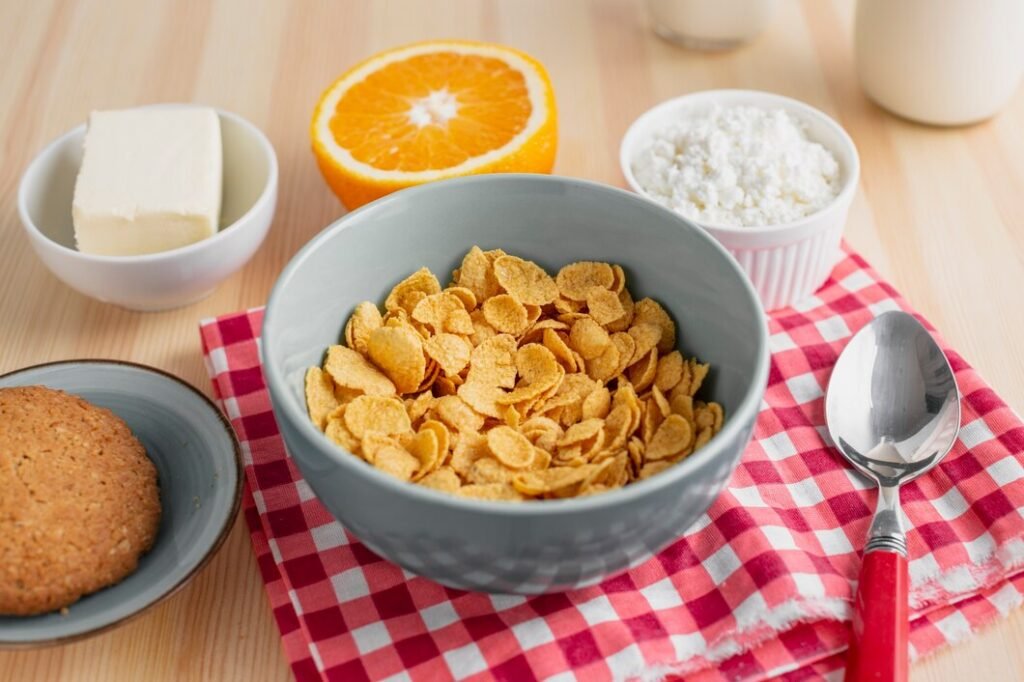
1. A bowl of sugary cereal
Sugary cereals are a common breakfast choice, especially for children, but they’re often packed with refined sugars and lack essential nutrients. While they may provide a quick burst of energy, this is usually followed by a sharp crash, leaving you feeling tired and hungry shortly after.
Why They’re Unhealthy:
- High in Sugar: Many cereals contain more sugar than a dessert, contributing to weight gain and increasing the risk of type 2 diabetes.
- Low in Fiber: Without enough fiber, sugary cereals don’t keep you full for long, leading to overeating later in the day.
- Artificial Ingredients: Many brands add artificial flavors, colors, and preservatives, which offer no nutritional value.
Healthier Alternative:
Opt for whole-grain cereals with minimal added sugar, or switch to oatmeal topped with fresh fruit and nuts. This will provide longer-lasting energy and keep you feeling full throughout the morning.

2. Pancakes, Waffles, Donuts and Pastries
Pan cakes, Waffles, Donuts and pastries are delicious but far from the best way to start your day. While they may satisfy your sweet tooth, they’re loaded with sugar, refined flour, and unhealthy fats – a combination that can lead to energy crashes and long-term health risks.
Pancakes and waffles are classic weekend breakfast favorites, whether made at home or enjoyed at a restaurant.
Both are prepared using flour, eggs, sugar, and milk, but the cooking methods differ to give each its unique texture and shape.
While pancakes and waffles offer more protein than some breakfast foods, they are primarily made from refined flour. Research suggests that consuming refined grains, like wheat flour, may contribute to insulin resistance and obesity.
Additionally, they are often topped with pancake syrup, which contains high-fructose corn syrup. This type of sweetener is linked to inflammation, potentially increasing the risk of insulin resistance, prediabetes, and type 2 diabetes.
Even pure maple syrup, a more natural alternative, is still high in sugar and adds extra calories without significant nutritional value.
The American Heart Association reports that most people consume two to three times the recommended daily limit for added sugars.
Why They’re Unhealthy:
- High in Sugar and Fat: Donuts and pastries are often deep-fried and glazed with sugary coatings, contributing to weight gain and spiking blood sugar levels.
- Low in Nutrients: These treats provide little to no fiber, protein, or essential vitamins, leaving you hungry again within hours.
- Trans Fats: Some pastries contain trans fats, which increase bad cholesterol (LDL) and raise the risk of heart disease.
Healthier Alternative:
Try whole-grain toast with almond butter or a smoothie made with fruits and vegetables. These options provide more nutrients and keep you energized longer.
Bottom Line:
Donets, Pancakes and waffles are made with refined flour and sugary toppings, which may contribute to obesity, insulin resistance, and an increased risk of type 2 diabetes and other health issues.
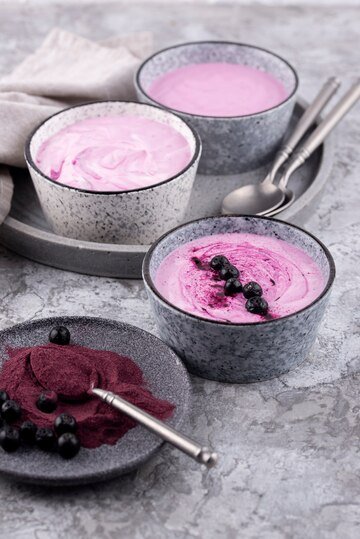
3. Flavored Yogurts
Flavored yogurts may seem like a healthy breakfast choice, but many are packed with added sugars and artificial ingredients that can outweigh their benefits. While yogurt itself is a good source of protein, calcium, and probiotics, the flavored versions often turn this nutritious food into a sugary treat.
A bowl of plain, whole-milk Greek yogurt topped with fresh berries is a nutritious and satisfying breakfast.
On the other hand, fat-free fruit-flavored yogurt sweetened with sugar is far from healthy.
In fact, many flavored non-fat yogurts contain more sugar than a similar serving of ice cream.
Fat plays an important role in keeping you full because it digests slower than carbohydrates and triggers the release of cholecystokinin (CCK), a hormone that signals fullness.
When fat is removed from dairy products and replaced with sugar, what could have been a healthy breakfast turns into something more suitable as an occasional indulgence.
Why They’re Unhealthy:
- High in Added Sugar: Some flavored yogurts contain as much sugar as a dessert, which can lead to weight gain and increase the risk of type 2 diabetes.
- Artificial Flavors and Preservatives: Many flavored yogurts include artificial flavors and preservatives, offering little nutritional value.
- Blood Sugar Spikes: The combination of sugar and low fiber can cause rapid blood sugar spikes and crashes, leaving you hungry shortly after eating.
Healthier Alternative:
Choose plain, unsweetened yogurt and add natural sweetness with fresh fruits, nuts, or a drizzle of honey. This way, you control the sugar content while still enjoying a tasty and nutrient-rich breakfast.
Bottom Line:
Fat-free sweetened yogurt is often loaded with sugar, sometimes even more than ice cream, and lacks the natural fats that help keep you satisfied.

4. Breakfast Sausages
Breakfast sausages are a popular part of many morning meals, but they come with hidden health risks. While they’re high in protein, the downsides often outweigh the benefits due to their high levels of unhealthy fats, sodium, and preservatives.
Why They’re Unhealthy:
- High in Saturated Fat and Sodium: Excessive saturated fat and salt can raise blood pressure and increase the risk of heart disease.
- Processed Meat Risks: Regular consumption of processed meats is linked to a higher risk of cancer, according to health studies.
- Low Nutrient Value: Despite being filling, sausages provide little fiber or essential vitamins.
Healthier Alternative:
Consider lean protein options like turkey or chicken sausages, or switch to plant-based alternatives. Eggs, beans, and avocado also make great, nutritious additions to your breakfast plate.
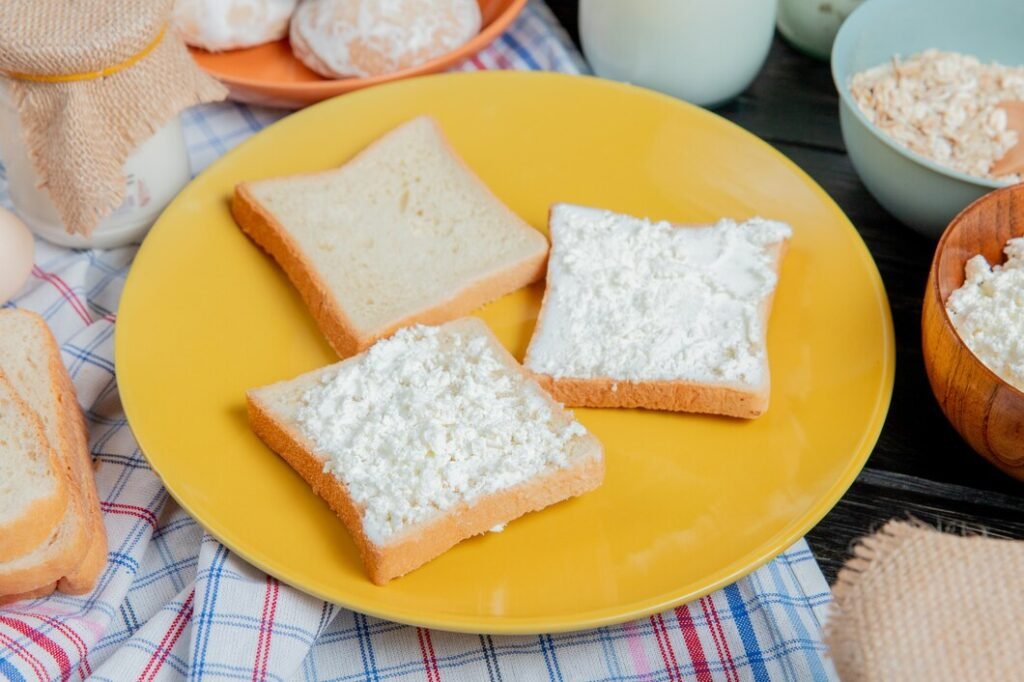
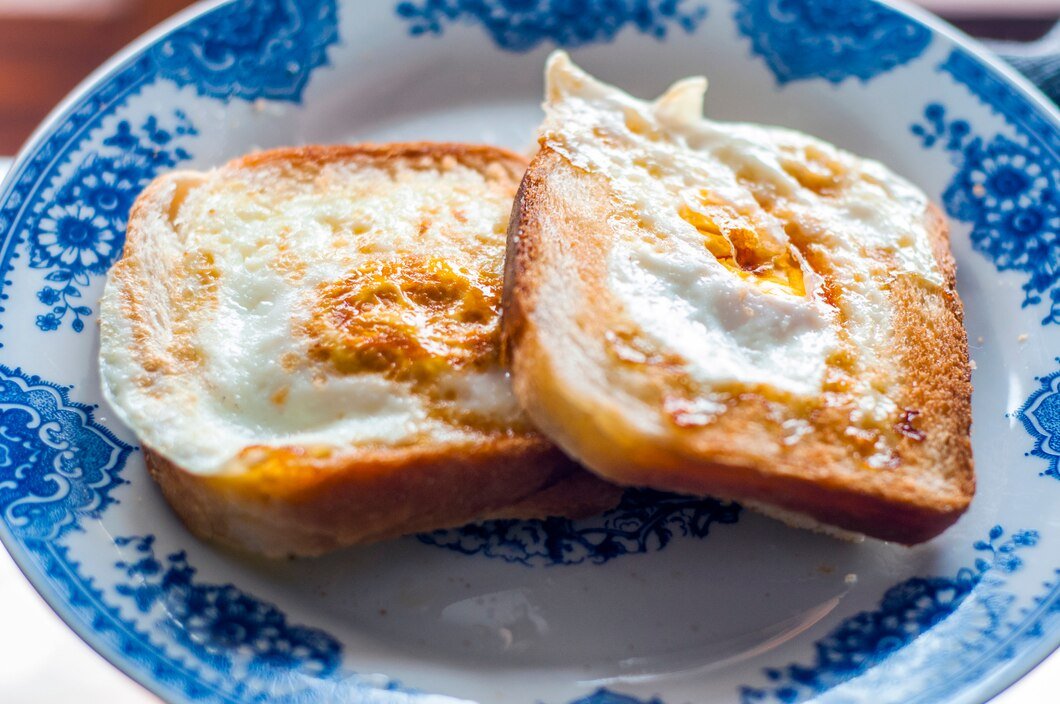
5. Toast with Margarine
Toast with margarine is a common breakfast choice, but it’s not as healthy as it might seem. While quick and convenient, this combination often lacks essential nutrients and contains unhealthy ingredients that can impact your health.
Why They’re Unhealthy:
- Refined Bread: Most toast is made from refined white bread, which is low in fiber and can cause blood sugar spikes, leaving you hungry soon after.
- Unhealthy Fats in Margarine: Margarine is often made with partially hydrogenated oils, a source of trans fats that raise bad cholesterol (LDL) and increase the risk of heart disease.
- Lack of Nutrients: This breakfast lacks protein, fiber, and healthy fats, which are essential for staying full and energized.
Healthier Alternative:
Swap refined white bread for whole-grain or sprouted bread, and replace margarine with nutrient-rich spreads like avocado, nut butter, or hummus. Add a side of fruit or a boiled egg for a more balanced and satisfying meal.
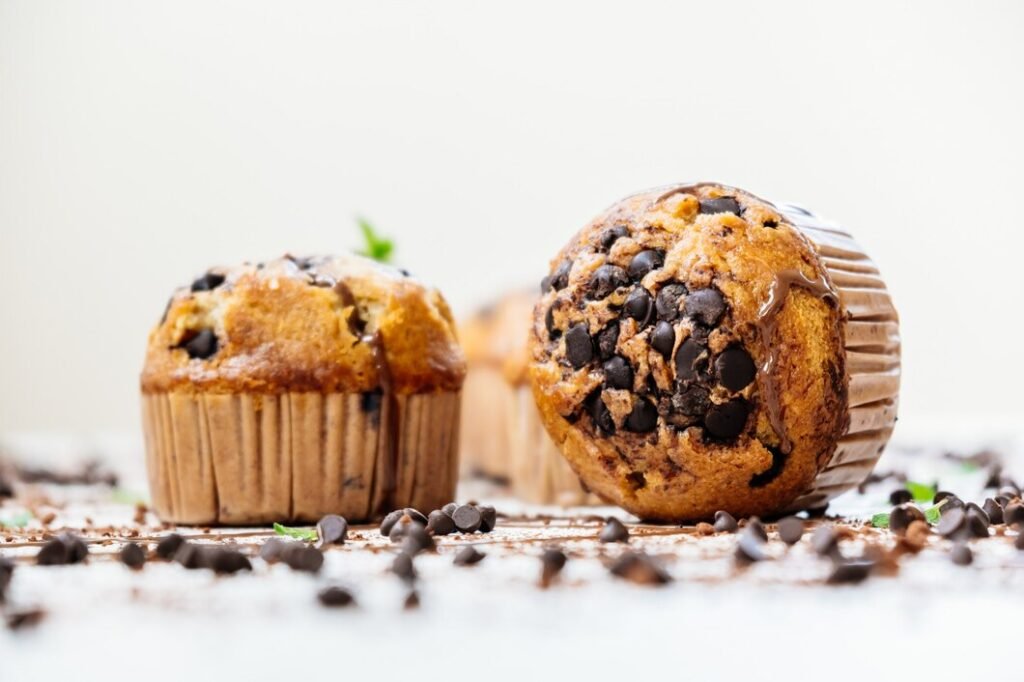
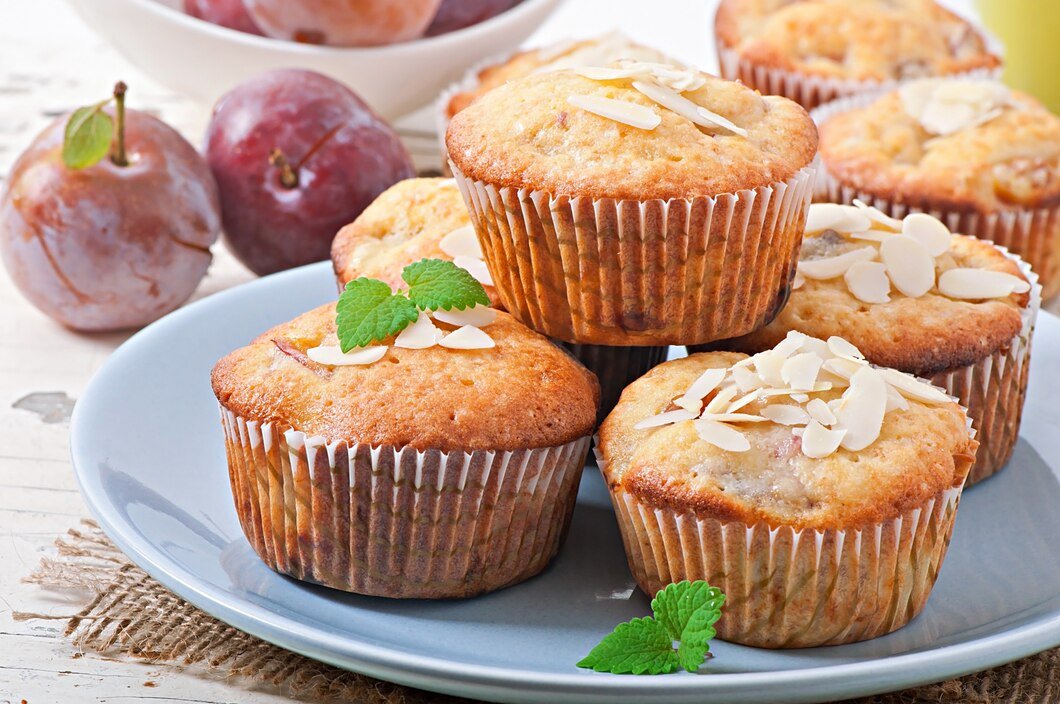
6. Muffins
Muffins are often seen as a quick and tasty breakfast option, but they’re usually more like dessert than a nutritious meal. Despite their small size, muffins are packed with refined flour, sugar, and unhealthy fats, making them a less-than-ideal way to start your day.
Healthier Alternative:
- High in Sugar and Calories: Most muffins contain large amounts of sugar and can have as many calories as a slice of cake.
- Refined Flour: Muffins are typically made with white flour, which offers little fiber or nutrients and can lead to blood sugar spikes.
- Hidden Fats: Many muffins contain butter or vegetable oils, contributing to excess saturated fats and calories.
Healthier Alternative:
Try making homemade muffins with whole-grain flour, less sugar, and added fruits or nuts. Alternatively, choose a high-fiber breakfast like oatmeal or a smoothie to keep you full and energized throughout the morning.
Details Muffins:
Although muffins are often seen as a healthy choice, most are simply small cakes in disguise.
They’re typically made with refined flour, vegetable oils, eggs, and sugar – with eggs being the only truly nutritious ingredient.
To make matters worse, store-bought muffins are often oversized. A review found that the average packaged muffin is 333% larger than the USDA’s recommended portion size.
Over the past 30 years, portion sizes have significantly increased, contributing to the rise in obesity.
Many muffins are also topped with sugar or packed with chocolate chips and dried fruit, further boosting their calorie and sugar content.
Bottom Line:
Muffins are generally high in refined flour, vegetable oils, and sugar – making them an unhealthy breakfast option.


7. Toaster Pastries
Toaster pastries are a quick and convenient breakfast option, but they offer little nutritional value and are packed with sugar and refined ingredients. While they may taste good, they can lead to energy crashes and long-term health issues.
Why They’re Unhealthy:
- High in Sugar: Toaster pastries often contain large amounts of added sugar and high-fructose corn syrup, contributing to weight gain and increasing the risk of type 2 diabetes.
- Refined Flour: Made with white flour, they lack fiber and essential nutrients, leading to quick digestion and hunger shortly after eating.
- Low in Protein and Fiber: Without enough protein or fiber, toaster pastries fail to keep you full and satisfied, often leading to overeating later in the day.
Healthier Alternative:
Choose whole-grain toast with peanut butter and banana slices or a smoothie with fruits and spinach. These options provide lasting energy and essential nutrients for a healthier start to your day.
More Details:
Toaster pastries are a quick and convenient breakfast choice, but their ingredients are far from healthy.
Popular brands like Pop-Tarts are made with white flour, brown sugar, high-fructose corn syrup, and soybean oil.
The label may claim they’re “baked with real fruit,” but this is often a marketing tactic to make them seem healthier than they are.
In reality, toaster pastries are loaded with sugar and refined flour while providing very little protein – usually just a few grams per serving.
Research shows that breakfasts low in protein and high in carbs can lead to increased hunger and overeating later in the day. One study found that women who consumed a breakfast with 3 grams of protein and 44 grams of carbs ate more at lunch compared to those who had a high-protein, low-carb meal.
Bottom Line:
Toaster pastries are high in sugar and refined carbs but lack the protein needed to keep you full, potentially leading to increased hunger and greater food intake.
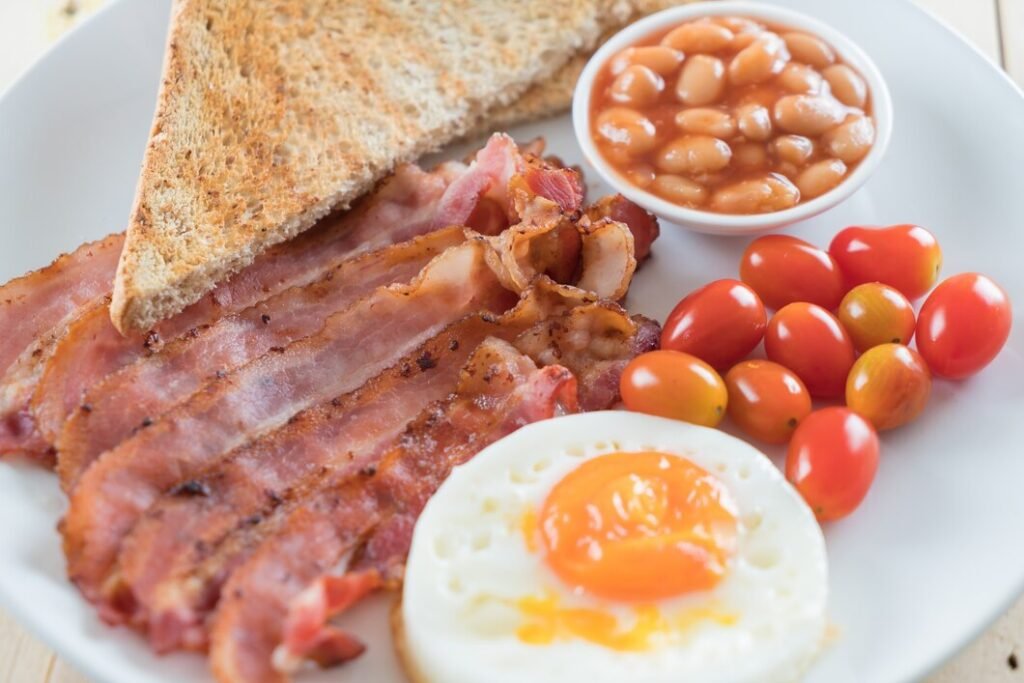
8. Bacon
Bacon is a popular breakfast food known for its crispy, savory flavor. However, despite its taste, it’s not the healthiest way to start your day.
Why They’re Unhealthy:
- High in Saturated Fat and Sodium: Bacon is loaded with saturated fat and salt, which can raise blood pressure and increase the risk of heart disease.
- Processed Meat Risks: Regular consumption of processed meats like bacon is linked to a higher risk of cancer and other chronic diseases.
- Low in Nutrients: While bacon provides protein, it lacks essential vitamins and minerals, making it a poor choice for a balanced breakfast.
Healthier Alternative:
Try leaner options like turkey or chicken bacon, or replace bacon with avocado, eggs, or smoked salmon. These alternatives provide healthy fats and protein without the added risks.
More Details:
Bacon is salt-cured pork, typically made from the belly or less fatty parts of the back. It’s commonly served as a breakfast side dish, featured in sandwiches like the BLT, or used to enhance the flavor of various dishes. Despite its popularity, regular bacon consumption has been linked to higher mortality rates and other health risks.
Bacon is also used to add moisture and flavor to roasts, especially game meats like venison and pheasant. It can be layered over meat (a process known as barding) or inserted into roasts (larding) to keep them tender during cooking. The term “bacon” comes from the Proto-Germanic *bakkon, meaning “back meat.”
In addition to pork, meats from animals like beef, lamb, chicken, goat, or turkey can be cured and prepared in a similar way, often labeled as “turkey bacon” or “beef bacon.” This is especially common in regions with large Jewish and Muslim populations, where pork consumption is prohibited. There are also vegetarian alternatives, such as soy-based “bacon,” for those avoiding meat.

9. Scones with jam and cream
Scones with jam and cream are a delightful treat, often enjoyed with tea or as part of a special breakfast. However, this indulgent combination is more dessert than a healthy way to start the day.
Why They’re Unhealthy:
- High in Refined Flour and Sugar: Scones are typically made with white flour, sugar, and butter, contributing to a high-calorie, low-nutrient meal.
- Calorie-Dense Toppings: Jam adds significant sugar, while cream (often clotted or whipped) is rich in saturated fat, leading to excessive calorie intake.
- Low in Fiber and Protein: This combination lacks the fiber and protein needed to keep you full, leading to energy crashes and hunger shortly after eating.
Healthier Alternative:
Opt for whole-grain scones and use Greek yogurt with fresh berries instead of jam and cream. This swap reduces sugar and adds protein and fiber for a more balanced and nourishing breakfast.
More Details:
Scones with jam are more like dessert than a nutritious breakfast.
Made from refined wheat flour, butter, and sugar, scone dough is shaped into rounds and baked. The final product is often topped with jam or jelly and cream, resulting in a high-calorie, sugary meal with minimal fiber and protein.
Fiber plays an essential role in regulating blood sugar and promoting fullness, which can help prevent overeating. In contrast, breakfasts high in refined carbohydrates can cause blood sugar spikes, leading to increased hunger.
Research shows that children who ate high-carb breakfasts felt hungrier and less satisfied than those who consumed high-protein, low-carb meals. Their hunger and satiety hormones also reflected this imbalance.
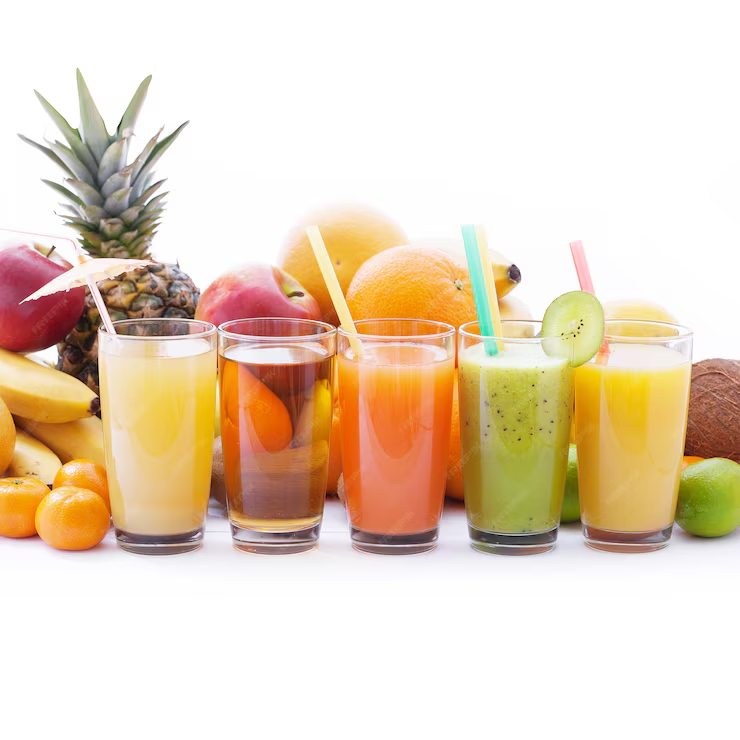
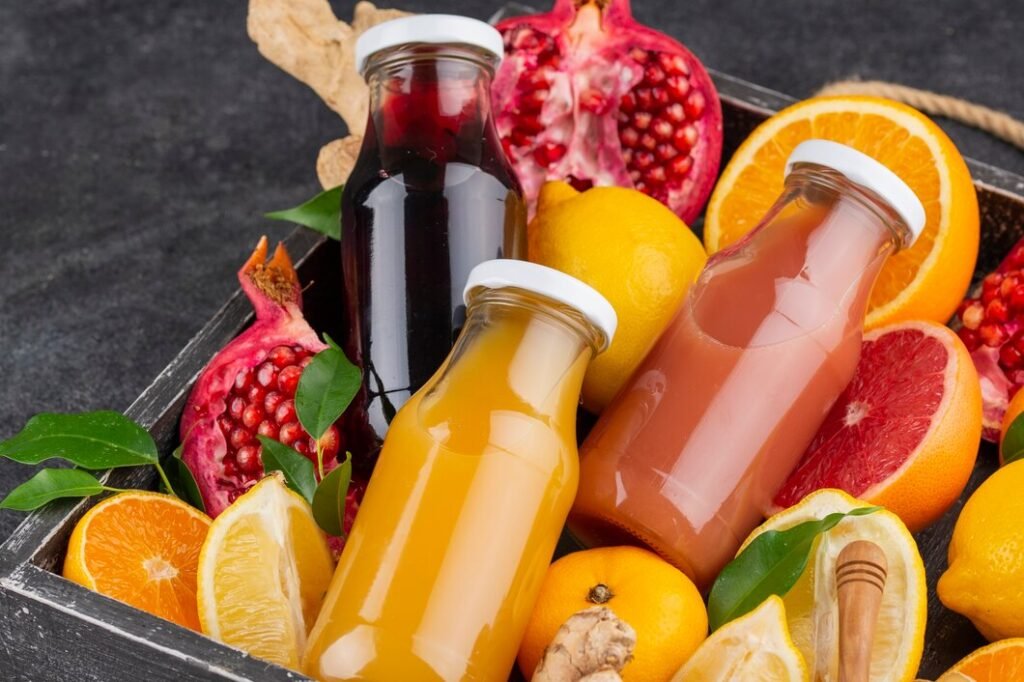
10. Energy Drinks / Sugary Juices / Fruit Juices
Energy drinks have become increasingly popular in recent years, especially among young adults, athletes, and individuals looking for a quick energy boost. However, it’s important to understand both the benefits and the potential risks associated with consuming these beverages. Here’s a comprehensive overview of energy drinks:
Sugary juices are often perceived as healthy due to their association with fruit, but they can actually be quite unhealthy when consumed in excess. Here’s a detailed look at why sugary juices are considered unhealthy and some healthier alternatives:
Why They’re Unhealthy:
High Sugar Content:
- Natural Sugars: Even 100% fruit juices contain high levels of natural sugars (fructose).
- Added Sugars: Many commercial juices have added sugars, further increasing the sugar content.
- Blood Sugar Spikes: High sugar intake can lead to rapid spikes in blood sugar levels, followed by a crash, which can cause fatigue and increased hunger.
Lack of Fiber:
- Juicing Process: The juicing process removes the fiber from the fruit, which is essential for slowing down the absorption of sugars and promoting feelings of fullness.
- Digestive Health: Fiber is crucial for digestive health, and its absence in juice can lead to digestive issues.
Calorie Density:
- High Calories: Sugary juices are often high in calories but low in nutrients, contributing to weight gain and obesity.
- Empty Calories: They provide “empty calories” with little nutritional value compared to whole fruits.
Dental Health:
- Tooth Decay: The high sugar content and acidity of juices can contribute to tooth decay and enamel erosion.
Metabolic Issues:
- Insulin Resistance: Regular consumption of high-sugar juices can lead to insulin resistance and increased risk of type 2 diabetes.
- Liver Health: Excessive fructose consumption can lead to fat accumulation in the liver, contributing to non-alcoholic fatty liver disease.
Common Sugary Juices:
- Orange Juice: Often high in natural sugars and sometimes added sugars.
- Apple Juice: High in fructose and often sweetened further.
- Grape Juice: Very high in natural sugars.
- Fruit Punch: Typically a blend of various fruit juices with added sugars.
- Cranberry Juice Cocktail: Often sweetened with high-fructose corn syrup or other sweeteners.
Healthier Alternatives:
Whole Fruits:
- Benefits: Eating whole fruits provides the full spectrum of nutrients, including fiber, vitamins, and minerals.
- Examples: Apples, oranges, berries, and grapes.
Vegetable Juices:
- Benefits: Vegetable juices are generally lower in sugar and higher in nutrients.
- Examples: Carrot juice, beet juice, and green juices made from spinach, kale, and cucumber.
Smoothies:
- Benefits: Blending whole fruits and vegetables retains the fiber and nutrients.
- Examples: Green smoothies with spinach, banana, and almond milk; berry smoothies with mixed berries, yogurt, and a splash of milk.
Infused Water:
- Benefits: Adding slices of fruit to water can provide a refreshing, low-calorie beverage.
- Examples: Lemon water, cucumber-mint water, or berry-infused water.
Diluted Juices:
- Benefits: Diluting fruit juices with water can reduce the sugar content.
- Examples: Mixing half a cup of orange juice with half a cup of water.
Tips for Healthier Juice Consumption:
- Portion Control: Limit your intake of fruit juices to small portions, treating them more like a treat than a daily beverage.
- Read Labels: Choose juices that are 100% fruit juice with no added sugars.
- Balance: Pair juice with a balanced meal that includes protein and healthy fats to slow down sugar absorption.
By understanding the potential downsides of sugary juices and opting for healthier alternatives, you can make more informed choices that support your overall health and well-being.
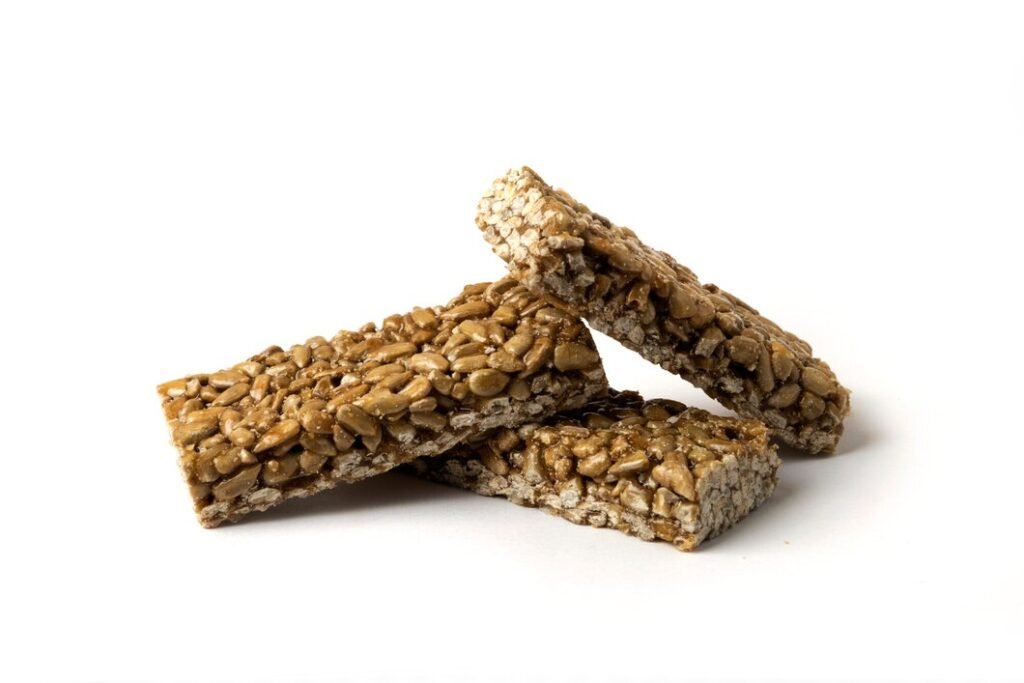
11. Granola Bars
Granola bars are a popular snack often marketed as a healthy option, but not all granola bars are created equal. Some can be high in sugar, calories, and unhealthy fats, making them less nutritious than they seem. Here’s a detailed look at granola bars, including their benefits, potential drawbacks, and tips for choosing healthier options:
Benefits of Granola Bars:
Convenience:
- Portable: Easy to carry and consume on the go, making them a convenient snack for busy individuals.
Nutrient Content:
- Whole Grains: Many granola bars contain whole grains like oats, which provide fiber and complex carbohydrates.
- Nuts and Seeds: Often include nuts and seeds, which are rich in healthy fats, protein, and essential nutrients.
- Dried Fruits: Can contain dried fruits, adding natural sweetness and additional nutrients.
Energy Boost:
- Quick Energy: Provide a quick energy boost, making them suitable for pre- or post-workout snacks.
Potential Drawbacks:
High Sugar Content:
- Added Sugars: Many commercial granola bars are high in added sugars, including syrups, honey, and sweeteners.
- Blood Sugar Spikes: High sugar content can lead to rapid spikes in blood sugar levels, followed by a crash.
Calorie Density:
- High Calories: Some granola bars are high in calories, which can contribute to weight gain if not consumed in moderation.
- Empty Calories: May provide calories with little nutritional value, especially if they are high in sugar and low in fiber.
Unhealthy Fats:
- Saturated and Trans Fats: Some bars contain unhealthy fats, including saturated and trans fats, which can increase the risk of heart disease.
Artificial Ingredients:
- Preservatives and Additives: May contain artificial flavors, colors, and preservatives, which can be harmful to health.
Tips for Choosing Healthier Granola Bars:
Read Labels:
- Ingredient List: Look for bars with whole, recognizable ingredients like oats, nuts, seeds, and dried fruits.
- Sugar Content: Choose bars with lower sugar content, ideally less than 10 grams per serving.
- Fiber and Protein: Opt for bars with higher fiber and protein content to promote satiety and balanced energy.
Avoid Added Sugars:
- Natural Sweeteners: Look for bars sweetened with natural sweeteners like dates or a small amount of honey or maple syrup.
- No Artificial Sweeteners: Avoid bars with artificial sweeteners, which can have negative health effects.
Check for Whole Grains:
- Whole Grain Oats: Ensure the bar contains whole grain oats or other whole grains as the primary ingredient.
Look for Healthy Fats:
- Nuts and Seeds: Choose bars that include nuts and seeds, which provide healthy fats and additional nutrients.
Portion Control:
- Moderation: Consume granola bars in moderation, treating them as an occasional snack rather than a daily staple.
Healthier Alternatives:
Homemade Granola Bars:
- Benefits: Making your own granola bars allows you to control the ingredients and avoid added sugars and unhealthy fats.
- Recipe Ideas: Combine oats, nuts, seeds, dried fruits, and a small amount of natural sweetener like honey or maple syrup.
Whole Food Snacks:
- Fresh Fruit: Opt for fresh fruit, which provides natural sugars, fiber, and essential nutrients.
- Nuts and Seeds: Choose a handful of nuts or seeds for a nutritious and satisfying snack.
- Yogurt: Pair yogurt with fresh fruit or a sprinkle of granola for a balanced snack.
Energy Balls:
- Benefits: Energy balls made from dates, nuts, and seeds provide a quick energy boost with natural sweetness and healthy fats.
- Recipe Ideas: Blend dates, almonds, chia seeds, and a small amount of cocoa powder for a tasty and nutritious snack.
By being mindful of the ingredients and choosing healthier options, you can enjoy granola bars as part of a balanced diet while avoiding the potential drawbacks of high-sugar, high-calorie varieties.
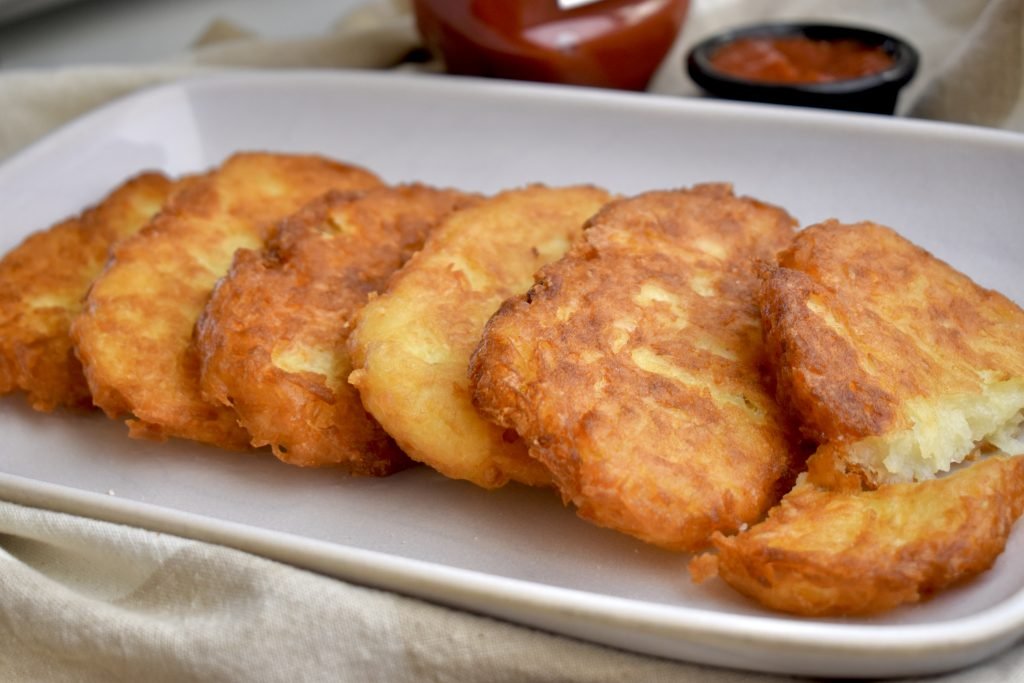
12 Fried Hush Browns
It seems like there might be a typo in your query. If you meant “Hash Browns,” I can certainly provide information on that. Hash browns are a popular breakfast side dish made from shredded or diced potatoes that are fried until crispy. Here’s a detailed look at hash browns, including their preparation, nutritional content, and healthier alternatives:
What Are Hash Browns?
Hash browns are a classic breakfast dish made from shredded or diced potatoes that are formed into patties and fried until golden brown and crispy. They are often served as a side dish with eggs, bacon, and other breakfast items.
Preparation:
Ingredients:
- Potatoes: Typically russet potatoes, which have a high starch content and hold together well.
- Seasonings: Salt, pepper, and sometimes additional spices like garlic powder or onion powder.
- Binders: Some recipes include binders like flour or eggs to help hold the patties together.
Method:
- Shredding: Potatoes are shredded using a grater or food processor.
- Squeezing: The shredded potatoes are squeezed to remove excess moisture, which helps achieve a crispy texture.
- Forming: The shredded potatoes are formed into patties.
- Frying: The patties are fried in oil until golden brown and crispy on both sides.
Nutritional Content:
- Calories: Hash browns are typically high in calories due to the frying process and the use of oil.
- Carbohydrates: High in carbohydrates, primarily from the potatoes.
- Fat: High in fat, especially if fried in large amounts of oil.
- Sodium: Can be high in sodium, especially if seasoned heavily.
- Fiber: Contains some dietary fiber from the potatoes.
- Vitamins and Minerals: Provides some vitamins and minerals, including vitamin C and potassium from the potatoes.
Health Implications:
High Calorie and Fat Content:
- Weight Gain: Regular consumption of fried hash browns can contribute to weight gain due to their high calorie and fat content.
- Heart Health: High intake of saturated and trans fats from frying can increase the risk of heart disease.
Sodium Intake:
- Blood Pressure: High sodium content can contribute to high blood pressure and related health issues.
Digestive Health:
- Fiber: While potatoes provide some fiber, the frying process and added oil can offset the benefits.
Healthier Alternatives:
Baked Hash Browns:
- Method: Instead of frying, bake the hash brown patties in the oven with a light coating of olive oil.
- Benefits: Reduces the fat and calorie content while retaining the crispy texture.
Sweet Potato Hash Browns:
- Method: Use shredded sweet potatoes instead of regular potatoes.
- Benefits: Sweet potatoes are higher in fiber, vitamins, and antioxidants compared to regular potatoes.
Air-Fried Hash Browns:
- Method: Use an air fryer to cook the hash brown patties with minimal oil.
- Benefits: Significantly reduces the fat and calorie content while achieving a crispy texture.
Vegetable Hash:
- Method: Incorporate other vegetables like bell peppers, onions, and zucchini into the hash brown mixture.
- Benefits: Increases the nutritional value and adds more fiber and vitamins.
Tips for Healthier Hash Browns:
- Use Less Oil: Opt for healthier oils like olive oil or avocado oil and use them sparingly.
- Add Herbs and Spices: Enhance the flavor with herbs and spices instead of relying on salt.
- Portion Control: Serve hash browns in smaller portions to manage calorie intake.
- Pair with Protein: Balance the meal by pairing hash browns with a source of protein like eggs or lean meats.
By choosing healthier cooking methods and incorporating more nutritious ingredients, you can enjoy hash browns as part of a balanced diet while minimizing the potential drawbacks.

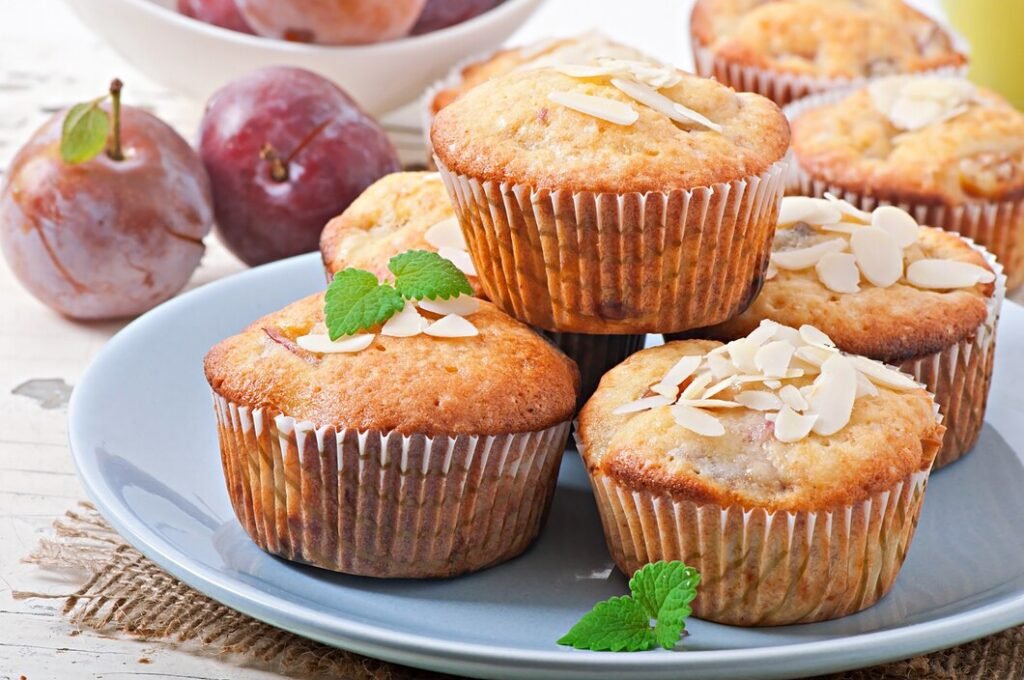
13. Muffins
Muffins are a popular baked good often enjoyed for breakfast or as a snack. While they can be delicious and convenient, many commercially available muffins are high in sugar, calories, and unhealthy fats, making them less than ideal for a balanced diet. Here’s a detailed look at muffins, including their benefits, potential drawbacks, and tips for choosing healthier options:
Benefits of Muffins:
Convenience:
- Portable: Easy to carry and consume on the go, making them a convenient snack for busy individuals.
Versatility:
- Variety of Flavors: Muffins come in a wide range of flavors, from sweet to savory, catering to different taste preferences.
- Customizable: Can be made with various ingredients to suit dietary needs and preferences.
Potential Nutritional Value:
- Whole Grains: Some muffins are made with whole grains, providing fiber and complex carbohydrates.
- Fruits and Nuts: Can include fruits, nuts, and seeds, adding natural sweetness, healthy fats, and essential nutrients.
Potential Drawbacks:
High Sugar Content:
- Added Sugars: Many commercial muffins are high in added sugars, including white sugar, brown sugar, and sweeteners.
- Blood Sugar Spikes: High sugar content can lead to rapid spikes in blood sugar levels, followed by a crash.
Calorie Density:
- High Calories: Muffins are often large in size and high in calories, which can contribute to weight gain if not consumed in moderation.
- Empty Calories: May provide calories with little nutritional value, especially if they are high in sugar and low in fiber.
Unhealthy Fats:
- Saturated and Trans Fats: Some muffins contain unhealthy fats, including saturated and trans fats, which can increase the risk of heart disease.
Artificial Ingredients:
- Preservatives and Additives: May contain artificial flavors, colors, and preservatives, which can be harmful to health.
Tips for Choosing Healthier Muffins:
Read Labels:
- Ingredient List: Look for muffins with whole, recognizable ingredients like whole grain flours, fruits, nuts, and seeds.
- Sugar Content: Choose muffins with lower sugar content, ideally less than 10 grams per serving.
- Fiber and Protein: Opt for muffins with higher fiber and protein content to promote satiety and balanced energy.
Avoid Added Sugars:
- Natural Sweeteners: Look for muffins sweetened with natural sweeteners like dates, bananas, or a small amount of honey or maple syrup.
- No Artificial Sweeteners: Avoid muffins with artificial sweeteners, which can have negative health effects.
Check for Whole Grains:
- Whole Grain Flours: Ensure the muffin contains whole grain flours like whole wheat, oat, or almond flour.
Look for Healthy Fats:
- Nuts and Seeds: Choose muffins that include nuts and seeds, which provide healthy fats and additional nutrients.
Portion Control:
- Moderation: Consume muffins in moderation, treating them as an occasional snack rather than a daily staple.
Healthier Alternatives:
Homemade Muffins:
- Benefits: Making your own muffins allows you to control the ingredients and avoid added sugars and unhealthy fats.
- Recipe Ideas: Use whole grain flours, natural sweeteners, and add fruits, nuts, and seeds for extra nutrition.
Mini Muffins:
- Benefits: Smaller portions help manage calorie intake while still enjoying the taste of muffins.
- Recipe Ideas: Make mini muffins with healthier ingredients like whole grain flours and natural sweeteners.
Savory Muffins:
- Benefits: Savory muffins often contain vegetables, herbs, and spices, adding more nutrients and flavor.
- Recipe Ideas: Incorporate ingredients like spinach, bell peppers, cheese, and herbs.
Whole Food Snacks:
- Fresh Fruit: Opt for fresh fruit, which provides natural sugars, fiber, and essential nutrients.
- Nuts and Seeds: Choose a handful of nuts or seeds for a nutritious and satisfying snack.
- Yogurt: Pair yogurt with fresh fruit or a sprinkle of granola for a balanced snack.
Example Recipe for Healthier Muffins:
Banana Oat Muffins:
Ingredients:
- 1.5 cups whole grain oat flour
- 1 teaspoon baking powder
- 1/2 teaspoon baking soda
- 1/4 teaspoon salt
- 2 ripe bananas, mashed
- 1/4 cup honey or maple syrup
- 1/4 cup unsweetened applesauce
- 1/4 cup almond milk
- 1 egg
- 1 teaspoon vanilla extract
- 1/2 cup chopped walnuts (optional)
Instructions:
- Preheat the oven to 350°F (175°C) and line a muffin tin with paper liners.
- In a large bowl, combine the oat flour, baking powder, baking soda, and salt.
- In another bowl, mix the mashed bananas, honey, applesauce, almond milk, egg, and vanilla extract.
- Add the wet ingredients to the dry ingredients and stir until just combined.
- Fold in the chopped walnuts, if using.
- Divide the batter evenly among the muffin cups.
- Bake for 18-20 minutes, or until a toothpick inserted into the center comes out clean.
- Allow the muffins to cool in the pan for 5 minutes, then transfer them to a wire rack to cool completely.
By being mindful of the ingredients and choosing healthier options, you can enjoy muffins as part of a balanced diet while avoiding the potential drawbacks of high-sugar, high-calorie varieties.
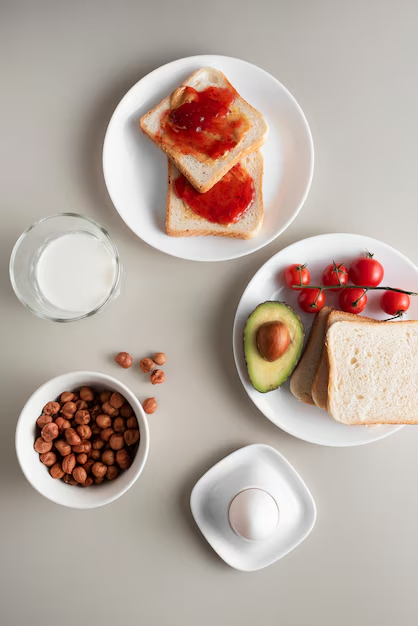
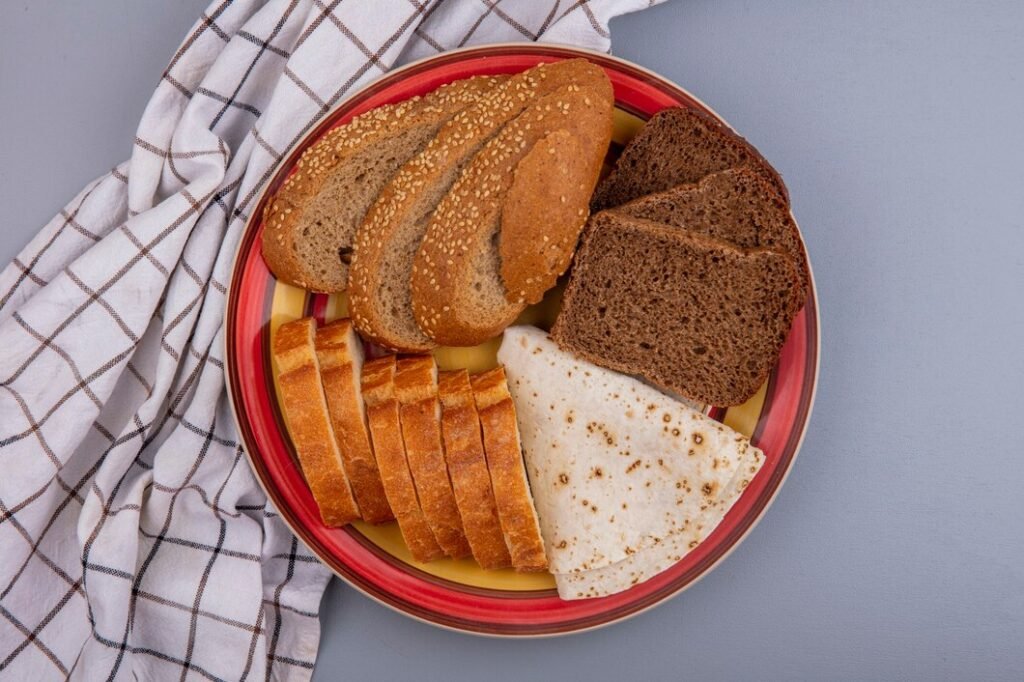
Processed, Gluten-Free Breakfast Foods
Processed, gluten-free breakfast foods have become increasingly popular as more people adopt gluten-free diets for various reasons, including celiac disease, gluten sensitivity, or personal preference. While these foods can be convenient and appealing, it’s important to understand their nutritional content and potential drawbacks. Here’s a detailed look at some common processed, gluten-free breakfast foods:
Common Processed, Gluten-Free Breakfast Foods:
Gluten-Free Cereals:
- Benefits: Often fortified with vitamins and minerals.
- Drawbacks: Can be high in added sugars and low in fiber.
- Examples: Gluten-free versions of popular cereals like Cheerios, Rice Krispies, and Corn Flakes.
Gluten-Free Bread and Bagels:
- Benefits: Provide a convenient alternative for those avoiding gluten.
- Drawbacks: Often made with refined starches and can be low in fiber and nutrients.
- Examples: Udi’s Gluten-Free Bread, Schar Gluten-Free Bagels.
Gluten-Free Pancake and Waffle Mixes:
- Benefits: Easy to prepare and can be a good source of carbohydrates.
- Drawbacks: Can be high in refined carbohydrates and added sugars.
- Examples: Bob’s Red Mill Gluten-Free Pancake Mix, Pamela’s Gluten-Free Baking & Pancake Mix.
Gluten-Free Granola:
- Benefits: Often contains nuts, seeds, and dried fruits, providing healthy fats and nutrients.
- Drawbacks: Can be high in added sugars and calories.
- Examples: KIND Healthy Grains Granola, Purely Elizabeth Ancient Grain Granola.
Gluten-Free Muffins:
- Benefits: Convenient and can be made with healthier ingredients.
- Drawbacks: Often high in sugar, calories, and unhealthy fats.
- Examples: Udi’s Gluten-Free Muffins, Enjoy Life Foods Seed and Fruit Mix Muffins.
Gluten-Free Oatmeal:
- Benefits: Naturally gluten-free (ensure certified gluten-free to avoid cross-contamination) and high in fiber.
- Drawbacks: Flavored varieties can be high in added sugars.
- Examples: Bob’s Red Mill Gluten-Free Rolled Oats, Quaker Gluten-Free Instant Oatmeal.
Gluten-Free Breakfast Bars:
- Benefits: Portable and convenient.
- Drawbacks: Can be high in sugar, calories, and unhealthy fats.
- Examples: KIND Breakfast Bars, Lärabar.
Gluten-Free Pastries and Donuts:
- Benefits: Provide a gluten-free alternative for those with dietary restrictions.
- Drawbacks: Often high in sugar, refined carbohydrates, and unhealthy fats.
Tips for Choosing Healthier Gluten-Free Breakfast Options:
Read Labels:
- Ingredient List: Look for products with whole, recognizable ingredients like whole grains, nuts, seeds, and dried fruits.
- Sugar Content: Choose options with lower sugar content, ideally less than 10 grams per serving.
- Fiber and Protein: Opt for products with higher fiber and protein content to promote satiety and balanced energy.
Avoid Added Sugars:
- Natural Sweeteners: Look for products sweetened with natural sweeteners like dates, bananas, or a small amount of honey or maple syrup.
- No Artificial Sweeteners: Avoid products with artificial sweeteners, which can have negative health effects.
Check for Whole Grains:
- Whole Grain Flours: Ensure the product contains whole grain flours like brown rice flour, quinoa flour, or oat flour.
Look for Healthy Fats:
- Nuts and Seeds: Choose products that include nuts and seeds, which provide healthy fats and additional nutrients.
Portion Control:
- Moderation: Consume processed, gluten-free breakfast foods in moderation, treating them as an occasional option rather than a daily staple.
Healthier Alternatives:
Homemade Gluten-Free Breakfasts:
- Benefits: Making your own gluten-free breakfasts allows you to control the ingredients and avoid added sugars and unhealthy fats.
- Recipe Ideas: Use whole grain flours, natural sweeteners, and add fruits, nuts, and seeds for extra nutrition.
Whole Foods:
- Fresh Fruit: Opt for fresh fruit, which provides natural sugars, fiber, and essential nutrients.
- Nuts and Seeds: Choose a handful of nuts or seeds for a nutritious and satisfying snack.
- Yogurt: Pair gluten-free yogurt with fresh fruit or a sprinkle of gluten-free granola for a balanced breakfast.
Smoothies:
- Benefits: Blending whole fruits and vegetables retains the fiber and nutrients.
- Examples: Green smoothies with spinach, banana, and almond milk; berry smoothies with mixed berries, yogurt, and a splash of milk.
By being mindful of the ingredients and choosing healthier options, you can enjoy processed, gluten-free breakfast foods as part of a balanced diet while avoiding the potential drawbacks of high-sugar, high-calorie varieties.
